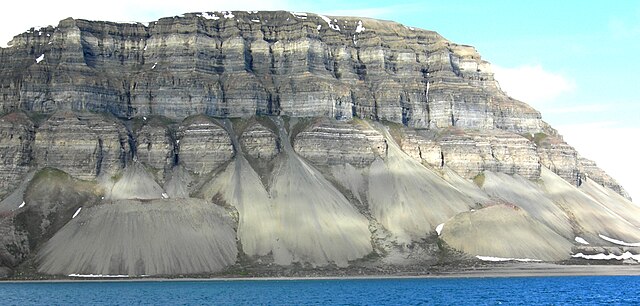Solifluction is a collective name for gradual processes in which a mass moves down a slope related to freeze-thaw activity. This is the standard modern meaning of solifluction, which differs from the original meaning given to it by Johan Gunnar Andersson in 1906.
Garland-like solifluction formed in the Swiss National Park
Solifluction sheets near Eagle Summit, Alaska
Solifluction lobes in Wyoming
Solifluction lobes on a slope devoid of vegetation - Nunavut, Canada
Mass wasting, also known as mass movement, is a general term for the movement of rock or soil down slopes under the force of gravity. It differs from other processes of erosion in that the debris transported by mass wasting is not entrained in a moving medium, such as water, wind, or ice. Types of mass wasting include creep, solifluction, rockfalls, debris flows, and landslides, each with its own characteristic features, and taking place over timescales from seconds to hundreds of years. Mass wasting occurs on both terrestrial and submarine slopes, and has been observed on Earth, Mars, Venus, Jupiter's moon Io, and on many other bodies in the Solar System.
Talus cones produced by mass moving, north shore of Isfjord, Svalbard, Norway
Mass wasting at Palo Duro Canyon, West Texas (2002)
A rockfall in Grand Canyon National Park
Curved tree trunks in an area of soil creep on Grand Mesa, Colorado, US








